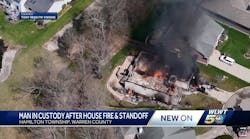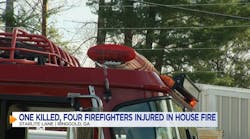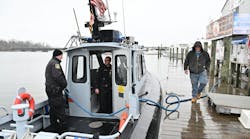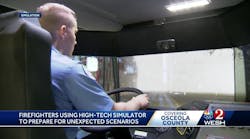Unseen threats are the routine for first responders. Knowing if there is imminent danger is key to getting home safely. This article outlines several cases where the Chicago Fire Department learned the value of using available technology in gauging an appropriate response.
More than 10 years ago, the Chicago Fire Department began deploying single-gas CO (carbon monoxide) monitors on all 200 of its engines and trucks. This came about with the advent of commercially available CO monitors for home use. The early home units often went into false alarm, and this would result in a panicked call from a homeowner for a response from the fire department. The need to know if there was an immediate threat to life or health could not wait for the arrival of the hazardous material response team. Each engine company was initially equipped with an industrial, single-gas CO monitor. These were most useful in the winter, when CO calls were often due to incomplete combustion in faulty heating systems. “After a family died from carbon monoxide poisoning 12 years ago, we first deployed single-gas CO sensors on every truck,” said Chief Daniel O’Connell, coordinator for Chicago Fire Department (CFD) Special Operations and Hazardous Materials.
Single-gas CO monitors might still be the norm, had it not been for some catastrophic events. In one instance, an engine company arrived for what they thought was a CO call, and because there was no alarm from the CO monitor, they assumed all was safe and entered the building. One of the firefighters turned on the building’s lights, initiating what turned out to be an explosion from a natural gas leak. “We began investigating the use of 4-gas meters two years ago, after several 911 calls where the CO monitor was not sufficient to detect the unseen threat, and we had two gas explosions,” added O’Connell.
Over this two-year period, the department ran various evaluations on different combinations of instruments and sensors. The objective was to determine if there was an immediate threat to life or health, and if the instrument alarmed, whether it would be sufficient to determine the need to secure the area and notify the HazMat team. The department’s two HazMat teams ran experiments using various combinations of instruments using the following four sensors: lower explosive limit (LEL) for combustible materials, carbon monoxide (CO), hydrogen sulfide (H2S) and oxygen (O2). Each of the sensors was chosen for the life-critical or time-critical threat information provided if it went into alarm. The carbon monoxide sensor was already proven. The lower explosive limit sensor was selected to detect the presence of high levels of flammable gas. The hydrogen sulfide sensor was chosen because H2S is a common threat that easily saturates a responder’s sense of smell. The oxygen sensor was selected because it would immediately indicate the need for an air mask and might also show the presence of an oxidizer. Other sensors that were considered included chlorine and ammonia, but both substances have other characteristics that make them identifiable. Four-gas instruments from many manufacturers were evaluated for ruggedness, user interface, calibration stability, battery life and ease of service. “We went through an evaluation process and selected the RAE Systems QRAE. The QRAE adds to the complement of RAE Systems instruments already utilized by the CFD HazMat teams, including wireless AreaRAE RDK monitors, MultiRAE Plus 4-gas monitors with PIDs, ppbRAE PIDs for decontamination and others,” said O’Connell.
“Part of our decision to go with the RAE Systems QRAE was the reliability and durability of the instruments,” said Robert Anthony, coordinator for the Chicago Fire Department’s Division of Equipment and Supply. To gain personnel efficiency, the 4-gas instrument calibration team works out of the same division as the breathing-air pack services. “Our in-house technicians maintain our fleet of over 200 QRAE units deployed at 102 firehouses. We currently calibrate each unit using the AutoRAE calibration station on a monthly cycle.”
The fire department training academy was called to develop a training and certification program in the new 4-gas instruments. “Much of the initial training on 4-gas instrument deployment was done by AFC International, an equipment supplier to the Chicago Fire Department,” said Doug Mayer, RAE Systems Director of Eastern U.S. and Canadian Sales. “Jim Seneczko and his company have provided much of the on-site training and support that the Chicago Fire Department required.” This training was encouraged using rank incentives in a similar fashion to emergency medical certifications. “The Chicago Fire Department has encouraged all of our firefighters to learn the basics of hazardous material response by offering level A and B Technician certifications,” said Lieutenant Myron Kovalevich from the Chicago Fire Department’s Training Academy.
At the same time as the fire department was growing in its use of gas monitors on every truck, the HazMat team was able to become more specialized. The team began to develop new response protocols which in turn were made part of the academy’s training. Two of the procedures that have become standard practice are the immediate use of an air-mask or SCBA at 35 ppm (parts per million) of carbon monoxide, and a CO reading of over 100 ppm makes the response a level-one HazMat event. Other meter based procedures include the immediate ventilation of a response scene when a Lower-Explosive-Limit exceeds ten percent and the use of the 4-gas meter in post fire overhauls to determine when it is safe to remove the SCBA. On-site response procedures include a fresh-air calibration of the meter prior to any building entry in addition to the monthly full instrument calibration. For confined space entry, the fire department has deployed both the 4-gas meter and in many cases the wireless AreaRAE monitors. As part of each after-response review, the on-scene data logs from any gas meters that were deployed are reviewed for alarms and reading response times.
The September 11, 2001, attacks in New York and Washington, D.C., began a new era for first responders, both in terms of homeland security responsibilities and the possible threats that might be encountered. The first protocols and equipment were tested as part of the May 2003 TopOff Drills, multi-agency events that included the United States National Guard Civil Support Teams, the United States and Illinois Environmental Protection Agencies, the US Centers for Disease Control, the Federal Bureau of Investigation and the United States Coast Guard. As a result, the HazMat teams began to develop decontamination protocols for both toxic chemicals and radiation. The drills included the first deployment of AreaRAE wireless toxic gas and radiation monitors for public venue protection. The TopOff Drills showed the need for critical incident information to be available beyond the local incident commander. The advent of secure internet protocols has enabled the fire department to engage remote specialists from the federal agencies and allowed all of them to see the same real-time sensor data. During large events, such as the annual “Taste of Chicago” that runs for 10 days and includes both an air and water show, connected gas detection technology has played a key role in creating safety deployment comfort with both civilian and municipal data users.
New technologies have allowed the Chicago Fire Department HazMat Teams to develop public venue protection protocols that have moved beyond the normal responsibilities of the fire department. The City of Chicago responded potential large scale threats that might require a multi-agency response by forming the Office of Emergency Management. This multi-agency city directorate has responsibility for issues related to Homeland Security. The department also took on the responsibilities performed by the Fire Department’s Bureau of Emergency Preparedness and Disaster Services and created what is now known as the Office of Emergency Management and Communications (OEMC). Today, OEMC protects life and property by operating the public safety communications system and by coordinating and managing emergency situations, and now includes 911 emergency services, 311 city services, the Office of Emergency Management, and City Operations.
On February 10, 2005, the OEMC launched a new Homeland Security Grid that includes both fiber optic and copper cable. This grid enables Chicago to expand its use of surveillance cameras and biological, chemical, and radiological sensors. These cameras and sensors simultaneously feed into the City's Operations Center for coordination of both critical city services and emergency response. The grid gives city officials tools to better respond to developments in homeland security, law enforcement, traffic management, crowd control, and severe weather.
Bob Durstenfeld has spent the last seven years as RAE Systems’ Director of Corporate Marketing and Investor Relations. Before joining RAE Systems, Durstenfeld served as Senior Director and Staff Technologist for the Silicon Valley office of Fleishman-Hillard Public Relations. Bob has also held marketing and management positions at Agilent Technologies and Hewlett-Packard Company. He has published articles on Port Security, Wireless Gas Detection, Semiconductor Testing and Automation Technology.
MR. Durstenfeld received his Masters in Engineering Management and International Marketing from Santa Clara University and his BS in Engineering and Biology from UCLA.




